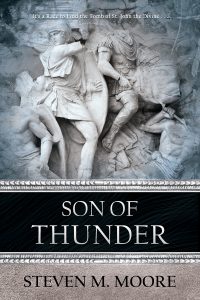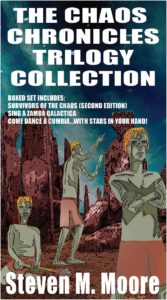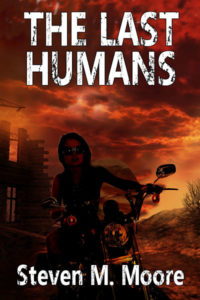Dystopian vs. post-apocalyptic…
My editing eyes were already functioning one morning after Dorian turned north. I read a headline in the venerable NY Times calling the disaster zones in the Bahamas “dystopian.” Not to diminish that huge human tragedy—as New Orleans and Puerto Rico have shown, it takes years to recover—or ignore the evidence it adds about the dangers of global warming, the idea for this post popped into my head. Maybe the Times’ loss, but my gain? They blew it. The correct word they should have used is “post-apocalyptic.”
As the name implies, post-apocalyptic refers to what comes after an apocalypse. To be precise and succinct, here’s a short definition: post-apocalyptic = denoting or relating to the time following a nuclear war or other catastrophic event. Emphasis is on “catastrophic event”—it doesn’t have to be a nuclear war, and Dorian qualifies.
The original apocalypse is portrayed in the Book of Revelation, although Noah’s flood can be considered a prequel (some people like to capitalize religious terms, so I meet them halfway by capitalizing Book of Revelation but not apocalypse—take it as a bow to Noah). Official Church dogma tells us that St. John wrote the apocalyptic vision in the Book of Revelation, and a lot of Christian lit portrays such an event will occur in the post-apocalypse when the “true believers” ascend to heaven.

An objective person, however, when reading that last book and St. John’s gospel, has to conclude at least that the styles are very different. It’s hard to believe that the same author wrote those two books. And, unlike the loving God of John’s gospel, the Book of Revelation is a throwback to the vengeful God of the Old Testament. This is discussed briefly in my new book Son of Thunder. I focus on John’s gospel in that novel rather than the Book of Revelation and its unknown authorship. In brief, there’s nothing post-apocalyptic or dystopian about that novel!
For many, Dorian was just a quirk of Mother Nature. For me, it was a result of global warming, at least its intensity. Recent storms have been intensified by increasing ocean temperatures. 90% of extra greenhouse heat is absorbed by the oceans! This also causes adds to the destruction of coral reefs and other ocean flora and fauna around the globe. In other words, that apocalypse called Dorian was mostly man-made.
A bit of this adds to the apocalypse portrayed in my post-apocalyptic thriller The Last Humans, mostly in climate problems and fresh water availability, but the main cause of that disaster is also man-made. It’s caused by a bio-engineered and airborne super-virus that blankets the Earth. It even kills most of its creators. Oops! I focus on the survivors. Surviving in a post-apocalyptic wasteland makes for good thriller fiction—depressing, yes, but there’s some hope as the story progresses.

While humans are responsible for the apocalypse in The Last Humans—even the consequences of global warming—ETs are responsible for the bioengineered and very adaptive super-virus in More than Human: The Mensa Contagion (“Mensa” here refers to the southern constellation, not the group of self-proclaimed super-geniuses). That sci-fi novel has a twist, though: An apocalypse occurs, but humans benefit in the post-apocalyptic world! I don’t know of any other post-apocalyptic novel that does that.
Dystopian is the antithesis of utopian: dystopian = relating to or denoting an imagined state or society where there is great suffering or injustice. The sequel to The Last Humans could be called dystopian: humans can react in a post-apocalyptic environment by creating a dystopia—there’s usually nothing left to create a utopia. I’m not sure that describes the dystopia in Survivors of the Chaos, though. It’s unlike Brave New World and 1984 too, two classic dystopian novels. In my novel, multinationals react to the breakdown of social institutions and breakups of large countries into smaller, tribal ones, called the Chaos, by maintaining order on Earth via their paid mercenaries and turning space exploration into space exploitation. That’s a different twist on dystopia too, one that neither Huxley nor Orwell could have imagined.
Bottom line: the NY Times should learn the difference between dystopian and post-apocalyptic. Sci-fi authors should too. Arguably the boundaries between them are a bit fuzzy, and the distinctions, as always, must take second place to the storytelling when writing fiction. Newspaper reporting is another matter.
***
Comments are always welcome.

The Last Humans. Did you miss this? Ex-USN and forensics diver for the LA County Sheriff’s Department Penny Castro surfaces from a dive for a body only to find death all around her. Follow her adventures—her struggles to survive and create an adopted family–in this post-apocalyptic thriller brought to you by Black Opal Books. Available in print and ebook format at Amazon or the publisher’s website, and at Smashwords and all their affiliated retailers (iBooks, B&N, Kobo, etc.) and lenders (Overdrive, etc.).
Around the world and to the stars! In libris libertas!
